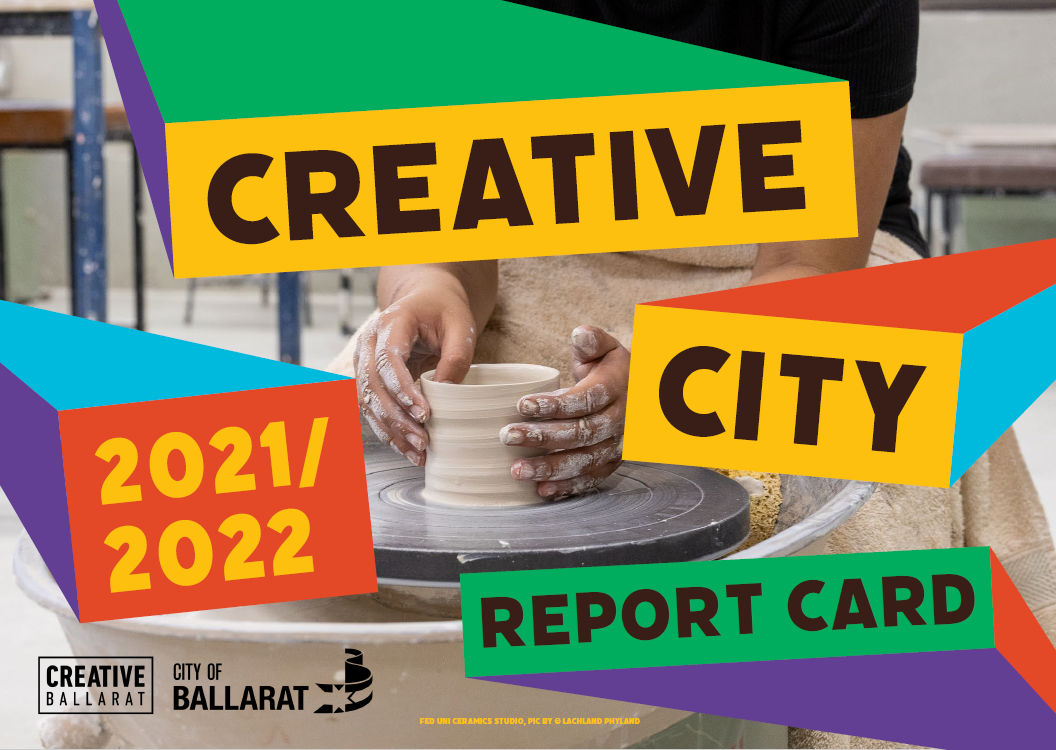reporting our progress
The City of Ballarat approved the implementation of the Creative City Strategy and Masterplan in May 2019, kickstarting the intent to embed creative thought and action at the heart of city operations. The wide-ranging and multifaceted Strategy was deliberately ambitious, with the Strategy expected to help guide and drive decision making, supporting the emergence of new and existing creative industries, and working to establish Ballarat as the home of the sustainable practitioner.
Public artist Chuck Mayfield (represented by Just Another Agency) looks on at his completed mural in Field Street. Design of the 2023/24 Report Card by Sam Harmer
Creative City Report Card 2021/22, designed by Jess Kelly from the Design Dept, Ballarat





